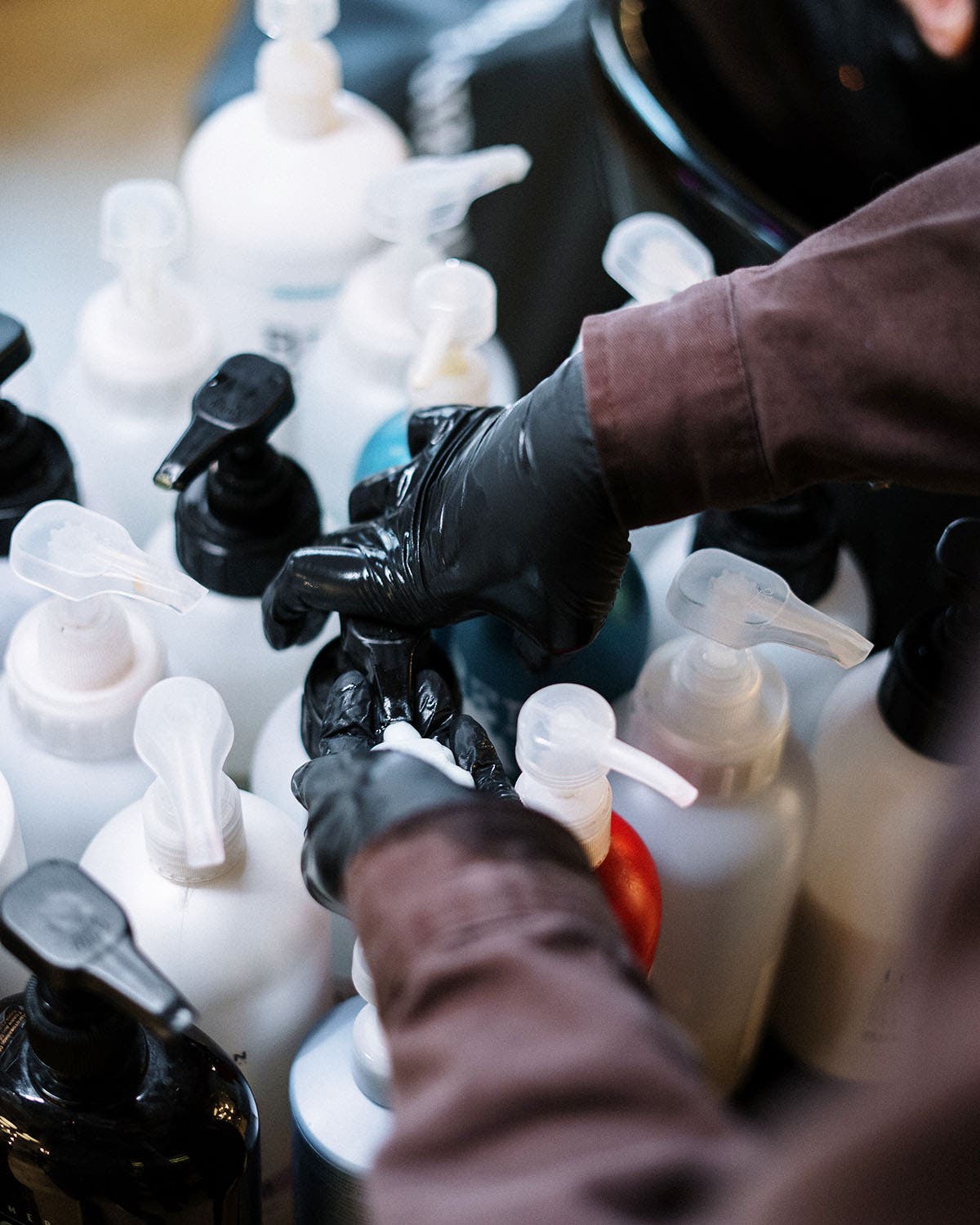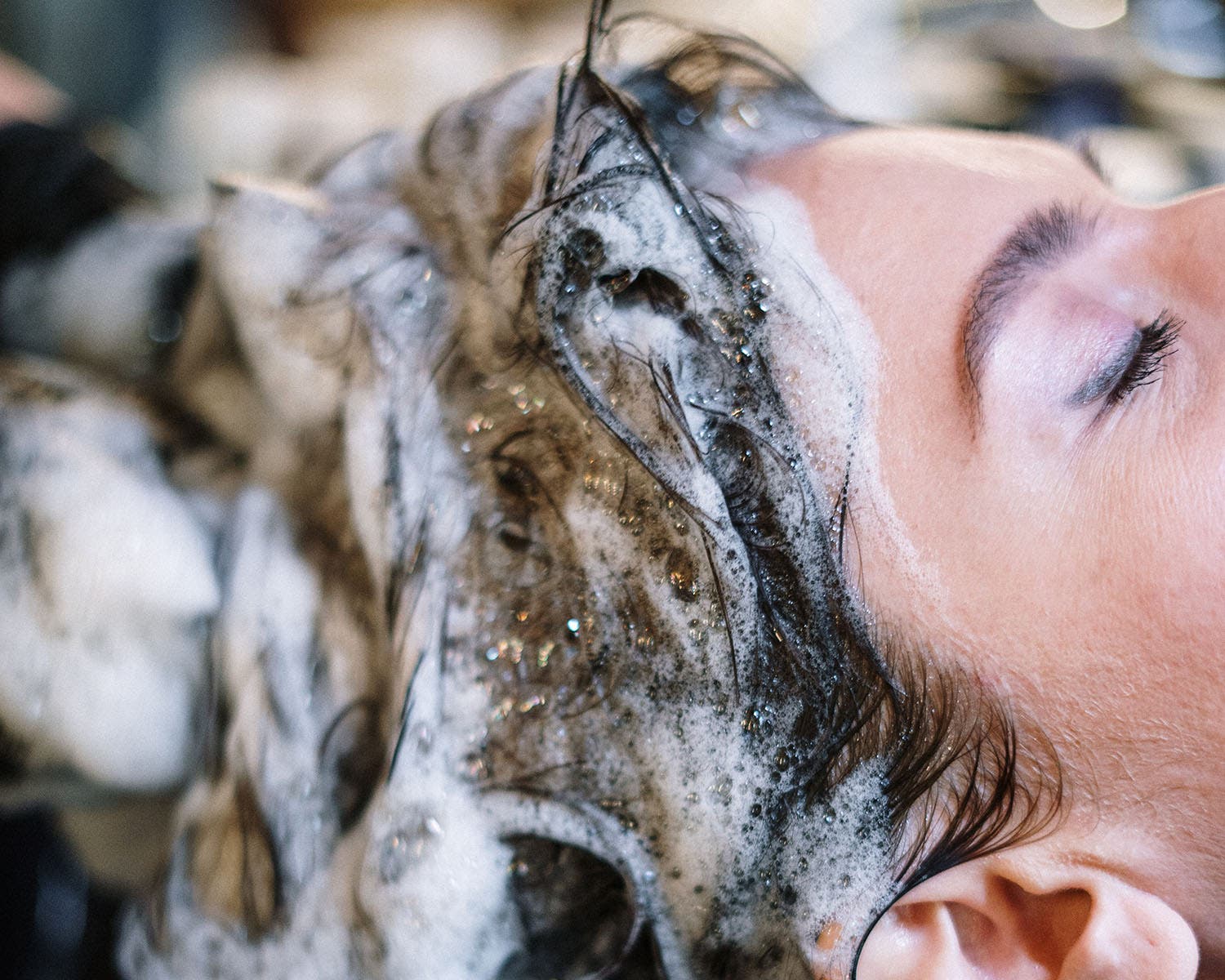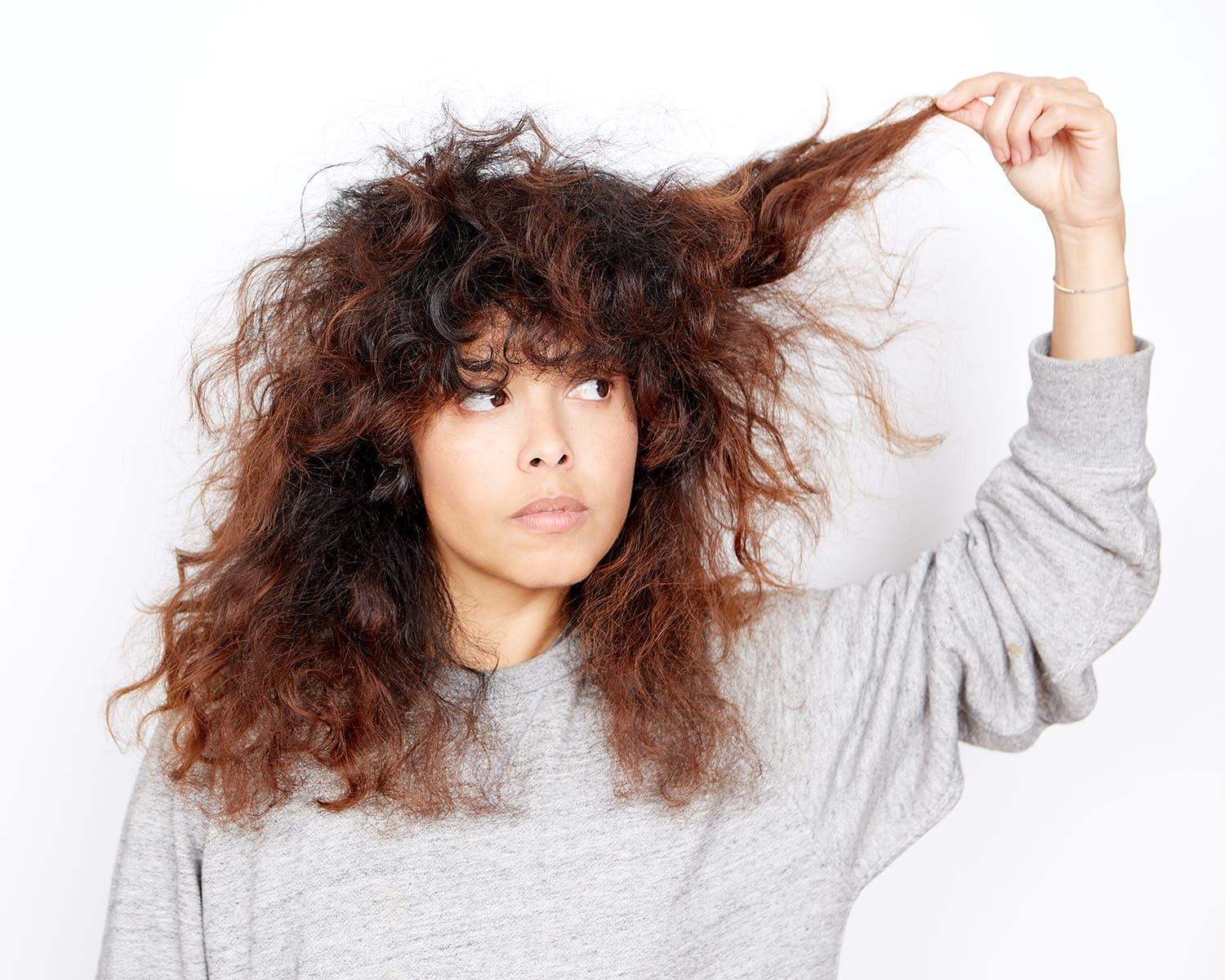Is Shampoo Bad For Your Hair?

Hairstory was founded in 2015 as a result of a years-long search for a better way to wash hair. Director of product development Jackie Bauer spent years testing cleansing formulas to soothe painful psoriasis and discovered that shampoo was part of the problem.
Jackie made it her goal to develop a product that effectively cleans while easing – and even preventing – flare-ups. While Jackie’s story is one for the books, what readers should note here is that the hairdressing community suspected for decades that there had to be a better way to wash hair than with shampoo.
Do you know what is in your shampoo bottle? This article might convince you that shampoo is bad for your hair. We’ll briefly touch upon the social history of washing hair and how it shaped our modern relationship with shampoo; take a closer look at the ingredients found in shampoo and their effect on the scalp; and finally, bust some shampoo myths that keep us seeking a sudsy scalp whenever we shower.
The Social History of Shampoo
Modern shampoo as we know it did not come about until about 100 years ago. Soon after, conditioners were developed to soften hair in ways that early shampoo couldn't manage to do. Learn more about the (chemical) history of shampoo here.
Although shampoo was different at the turn of the 19th century, it was still perceived as drying and damaging. Early options were mainly soaps made from lye and lard, both of which have high alkalinity (pH) levels. A high pH is great for washing dishes and clothing, but too harsh for the body, and shampoo washing is extremely drying and taxing on the hair.
Using soaps that led to dry, flaky scalps and fluffy hair with the “natural life” taken from it was even less desirable to some than natural oiliness. Early advice columns recommended washing NO MORE than once a week, and leaving hair unwashed for as long as 6 weeks. Lived-in hair was also welcomed to keep often complex hairstyles in place.
Sodium lauryl sulfate was developed in the 1930s. What is sodium lauryl sulfate exactly? Often referred to as SLS, it is the first man-made detergent. It was originally developed to wash laundry but became popular as companies added it to all types of cleansing products because it was inexpensive, easy to manufacture, less harmful to hair and skin than lye and lard, and, most importantly, it lathered like crazy, which became associated with thorough cleanliness.
It’s important to remember that as times have changed, so has the degree to which we find oily hair acceptable. SLS made it easier for businesses to produce and sell more products and encourage consumers to use them more often.
Imagine this all in the context of American history. In the 1930s, the US government introduced the New Deal to encourage economic spending to get Americans out of the Great Depression. During WWII (1941-1945) women entered the workforce and began supporting their families while men were overseas. With the purchasing power in their hands, they began investing more heavily in personal care and beauty products.
After the war ended, the 'American Way of Life' was celebrated, and exercising democratic freedom by spending money at home was a way to enact revenge. America prospered, ushering in the golden age of advertising which helped the beauty industry as a whole flourish.

Why You Should Never Use Shampoo
Today, many shampoos are still made with sodium lauryl sulfate and its close cousin sodium laureth sulfate (SLES) – and such detergents are very likely the root cause of your hair problems.
Detergents are amphiphilic, meaning they form super strong chemical bonds with both oil and water. When we wash our hair using detergents, they not only grab onto grease and dirt, but also our scalp’s natural protective barrier. Made from sebum, this barrier keeps our scalp hydrated and protected from allergens, the sun, and dryness. Detergents then grab onto water, which pulls dirt and both good and bad oils out of our hair and down the drain as we rinse.
Do you color treat your hair? Detergents also grab onto color pigments and remove them!
While we may FEEL clean after shampooing, we’ve actually overcleaned and put our scalps in danger. In fact, feeling “squeaky clean” means that you have successfully washed away that natural protective barrier. That squeaking you hear is the friction of hair between your fingers, and if your natural barrier remained intact, your fingers would glide instead.
In stripping the scalp, shampoo leaves it dry and irritated. Sometimes the scalp is left so dry that it flakes. Dry hair is also more prone to tangling, which is why washing with shampoo requires a moisturizing component to make hair smooth again. We know this as conditioner. You may have already realized that the natural oil barrier does exactly what conditioner does, yet we wash it all away and then replace it with a bottled substitute.
Shampoo damages our hair with every wash. The worst part? Because shampoo strips hair of the natural oil layer, our bodies recognize this as an attack and work overtime to replenish protection. Translation: Oily hair. Shampooers recognize this as dirty and jump back in the shower to wash it away, and the vicious cycle continues.
Shampoo is harmful in many ways:
• It dries out and irritates your scalp.
• It strips your hair of color
• It causes tangles (which require conditioner)
• It promotes sebum over-production
Common Myths About Shampoo That Keep You Coming Back For More
There are many myths created by shampoo salesmanship to keep us coming back. We’ve tackled this rhetoric to help us see through the suds in our eyes:
Is it OK to just shampoo your hair (without conditioner)?
As we explained earlier, it’s never okay to shampoo your hair because it is drying and damaging. It’s even more harmful to shampoo hair without following up with conditioner because hair becomes vulnerable and at risk of breakage and damage.
Lather, rinse, repeat
This bit of marketing magic is a genius way to get us to do one thing: use more shampoo. Don’t believe us? Look it up.
‘Dirty’ hair makes for better styling.
This is true, which is why we often add texture products to make hair less glassy, slippery, and unmanageable when freshly washed with shampoo. This is why so many people are seeking to wash less frequently: less clean hair is simply more cooperative.
Squeaky clean
You never want to hear squeaks coming from your head! This means that your hair and scalp has been stripped of its natural protective barrier of sebum. Without it, you risk dryness and skin irritation.
Shampoo Alternatives: The Modern Way To Say No to Shampoo
Your hairdresser may have urged you to wash as little as possible, and that’s because there are so few detergent-free options that actually clean hair – until now. Sure, there are so-called gentler detergents, but buyer beware of wolves in sudsy sheep’s clothing.
Sulfate-free shampoo
Some shampoo makers want you to believe they are doing right by your scalp by offering ‘sulfate-free’ shampoos. But sulfate-free shampoos still have detergents and they still strip your hair and scalp. To learn more about the types of detergents and sulfates, click here.
The bad: Shampoo bars
At best, they are a rebranded bar of soap that contains SLS. At worst, they are made with sodium hydroxide which is the same highly corrosive material found in Drano. You’ve seen what Drano does to hair that clogs your shower drain in a few hours, imagine what small quantities are doing to your scalp over time. Pass!
The good: New Wash
New Wash is completely detergent-free. It cleanses with a proprietary blend of essential oils that keep your protective barrier intact, while removing dirt and oils from the scalp. New Wash does not strip away good oils, meaning hair stays moisturized without using an additional conditioner.
The good: Dry shampoo
Nowadays there are other ways to manage oiliness. Dry shampoo is a great alternative to a full wash, but it’s important to recognize that it can contain harmful minerals like talc, which are known to cause cancer. Plus aerosol cans are not good for the environment. We recommend trying our aerosol-free and talc-free formula, Powder.
Conclusion: Is Shampoo Bad For Your Hair?
Since the advent of modern hair washing, we have known that shampoo is not ideal. It strips hair of its vital oils while cleaning, leaving scalps irritated, flaky and strands dry and prone to breakage. An oily scalp is the main reason why people wash their hair and consider it ‘dirty.’ But the product you think is ‘cleaning’ your hair is actually stripping it.




